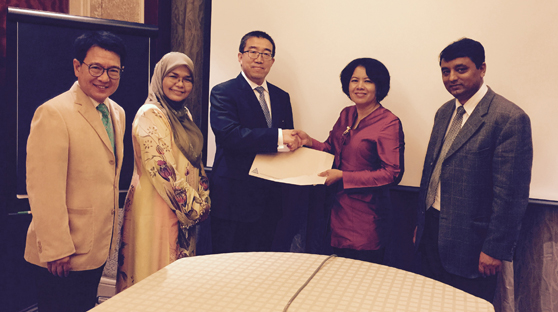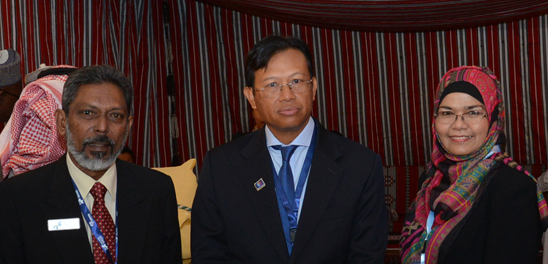 The Dart Centre for Journalism & Trauma offers journalists, photographers, camera operators, editors and producers in the Asia-Pacific region a unique opportunity to improve coverage of tragic events.
The Dart Centre for Journalism & Trauma offers journalists, photographers, camera operators, editors and producers in the Asia-Pacific region a unique opportunity to improve coverage of tragic events.
The fellowships offer briefings by leading experts in the trauma and journalism fields along with peer-to-peer discussions on the many challenges of covering tragedy and violence. The fellowships cover all travel, accommodations and ground expenses while attending the programme.
 The Dart Centre for Journalism & Trauma offers journalists, photographers, camera operators, editors and producers in the Asia-Pacific region a unique opportunity to improve coverage of tragic events.
The Dart Centre for Journalism & Trauma offers journalists, photographers, camera operators, editors and producers in the Asia-Pacific region a unique opportunity to improve coverage of tragic events.
The fellowship offer briefings by leading experts in the trauma and journalism fields along with peer-to-peer discussions on the many challenges of covering tragedy and violence. The fellowships cover all travel, accommodations and ground expenses while attending the programme.
More information and application form are available on Dart Centre Asia Pacific website:
http://dartcenter.org/content/2015-dart-asia-pacific-fellowship#.VMsrJyyfbvp
Applications Open for 2015 Dart AsPac Fellowship
 The Dart Centre for Journalism & Trauma offers journalists, photographers, camera operators, editors and producers in the Asia-Pacific region a unique opportunity to improve coverage of tragic events.
The Dart Centre for Journalism & Trauma offers journalists, photographers, camera operators, editors and producers in the Asia-Pacific region a unique opportunity to improve coverage of tragic events.
The fellowships offer briefings by leading experts in the trauma and journalism fields along with peer-to-peer discussions on the many challenges of covering tragedy and violence. The fellowships cover all travel, accommodations and ground expenses while attending the programme.
ICBT : Session 5: Creative Content for Capacity Building and Training
Day 2 - Friday, 6th February 2015, 1100 - 1230
Session 5: Creative Content for Capacity Building and Training
This session will connect broadcast training with the demand for creative content. In particular, it will look at new ways of thinking and working in a media converged world. What are the offline and online content and approaches needed to enliven training of broadcasters, particularly in a digital world. How can we build a multi skilled broadcast professional, one who values interactivity with audiences, and takes risks to develop new ways to expand audience reach?
ICBT : Session 4: Technological Innovations and Trends Impacting Creative Content Production
Day 2 - Friday, 6th February 2015, 0900 - 1030
Session 4: Technological Innovations and Trends Impacting Creative Content Production
This session will explore the range, and nature of technological changes, including ICT innovations influencing creative content production. It will describe some best practices of using information processing capabilities, repackaging of user-generated content and provision of easy-to-use platforms to enable audiences to exercise their creativity and innovativeness. In particular, it will look at case studies that highlight the impact of innovative trends in the ICT sector on creative content.
ICBT : Session 3: Creative Content for a Global Audience
Day 1 - Thursday, 5th February 2015, 1600 - 1730
Session 3: Creative Content for a Global Audience
This hands-on, interactive session will involve all participants in a creative content storytelling exercise. It is critical to have good storytelling dedicated to harnessing creativity, integrity, and imagination for serving local and global audiences. It will discuss critical components of a good story that attracts changing and demanding broadcast viewers provide best practices for effective storytelling across all platforms. It will seek to answer the question: Is there such a thing as a universally interesting and universally compelling story?
ICBT : Session 2: Shifting Audience Preferences and Behaviours
Day 1 - Thursday, 5th February 2015, 1400 - 1530
Session 2: Shifting Audience Preferences and Behaviours
Changing audience profiles and behaviour have had a significant impact in terms of content creation and distribution. It requires broadcasters to examine the demands of audiences to determine what content they want to consume and on what platforms they want to consume it. The reality of multi-platform simultaneous consumption (multi-tasking) means audiences are consuming and participating simultaneously. How do content creators meet these new audience demands? How can they use trends in social media to their advantage in crafting content?
ICBT : Session 1: The Future of Broadcasting Depends on Today’s Creative Content
Day 1 - Thursday, 5th February 2015, 1100 - 1230
Session 1: The Future of Broadcasting Depends on Today's Creavite Content
The session will look at the current state of creative content in the broadcast industry and outline the multidimensional aspects of creative content today. It will also identify the key players in creative content production, including new actors who are engaged in online content aggregation, distribution and branding. What are the roles of multi platform, crowd sourced, crowd funded audience interactive and collaborative forms of content? What are the essential economic, competitive, technological and social forces that are driving the evolution of creative content?
ICBT : Inaugural Session
Day 1 - Thursday, 5th February 2015, 1000 - 1030
Inaugural Session and Keynote Address
AIBD Appoints Mr. Chang Jin as New Director
AIBD is pleased to announce that Mr. Chang Jin from China has been appointed as Director of AIBD on 15 January 2015. The interview panel met in Kuala Lumpur, Malaysia to finalise the decision after an extended short-listing process and lengthy deliberation.
Mrs. Rosarita Niken Widiastuti, President of AIBD General Conference, chaired the panel. The panel also included Mr. Anothai Udomsilp, Chairman of the Strategic Planning Team (SPT) and Dato’ Adilah Shek Omar and Mr Laxman Humagain, Executive Board members.
Mr Chang Jin will take office as soon as possible pending work permit approval.
Crafting a Clear Vision for Social Media Engagement
The Asia Media Summit 2015 in Kuala Lumpur, Malaysia will offer public as well as private broadcasters in Asia Pacific a wide range of opportunities to debate, examine and formulate a clear vision for social media and pursue innovative strategies in dealing with this new media platform. As they recognise the growing symbiotic relationship they have with social media, broadcasters need to master this social media landscape in order to enhance their programmes, audience engagement and income generation.
While some broadcasters consider social media competition, others believe they can co-exist with social media and make this new platform a key partner to achieve their organisation’s goals.
IPPTAR/KKMM/AIBD 3rd International Conference on Broadcast Training
The 3rd International Conference on Broadcast Training, hosted by the Ministry of Communications and Multimedia, Malaysia (KKMM) and organised by the Tun Abdul Razak Broadcasting and Information Institute (IPPTAR) and AIBD will be held on 5-6 February 2015 in Kuala Lumpur, Malaysia.






